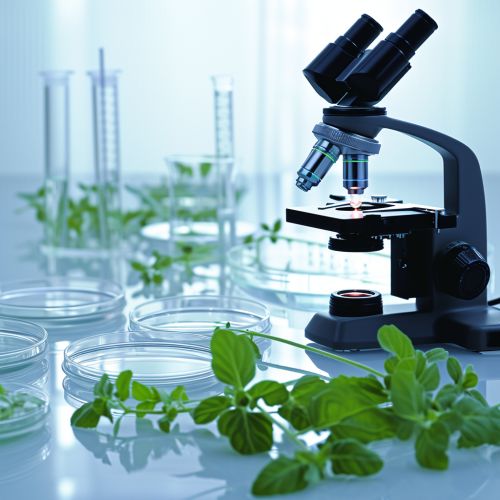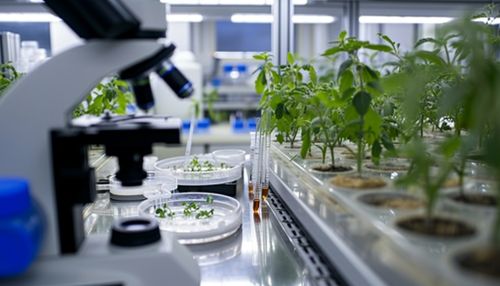Plant Genetic Engineering
Introduction
Plant genetic engineering is a set of techniques used to manipulate the genetic makeup of plants for the purpose of improving crop productivity, enhancing nutritional value, and creating resistance to pests and diseases. The process involves the introduction, elimination, or rearrangement of specific genes within the plant's DNA, thereby altering its characteristics or behavior.


History and Development
The concept of plant genetic engineering emerged in the early 20th century with the discovery of Mendelian inheritance and the realization that traits were controlled by individual genes. However, it was not until the 1970s, with the advent of recombinant DNA technology, that scientists were able to directly manipulate the genetic makeup of organisms. The first genetically engineered plant, a strain of tobacco resistant to antibiotics, was created in 1983.
Techniques
There are several techniques used in plant genetic engineering, each with its own advantages and disadvantages. These include Agrobacterium-mediated transformation, biolistics, protoplast fusion, and RNA interference (RNAi).
Agrobacterium-Mediated Transformation
Agrobacterium-mediated transformation is the most commonly used method for plant genetic engineering. It involves the use of the bacterium Agrobacterium tumefaciens, which naturally transfers its DNA into plants. Scientists manipulate this process by inserting the desired gene into the bacterium's DNA, which is then transferred into the plant.
Biolistics
Biolistics, also known as the "gene gun" method, involves shooting microscopic particles coated with DNA into plant cells. This method is often used when Agrobacterium-mediated transformation is not effective, such as with cereal crops.
Protoplast Fusion
Protoplast fusion involves the fusion of two plant cells that have had their cell walls removed, creating a hybrid cell. This method is often used to create hybrid plants that combine traits from two different species.
RNA Interference
RNA interference (RNAi) is a technique that involves the use of small RNA molecules to silence specific genes. This method is often used to create plants that are resistant to viruses.
Applications
Plant genetic engineering has a wide range of applications, from agriculture to medicine.
Agriculture
In agriculture, plant genetic engineering is used to create crops that are resistant to pests, diseases, and harsh environmental conditions. This can lead to increased crop yields and reduced reliance on chemical pesticides and fertilizers. Examples include Bt cotton, which is resistant to bollworms, and Roundup Ready soybeans, which are resistant to the herbicide glyphosate.
Medicine
In medicine, plant genetic engineering is used to produce pharmaceuticals in a process known as "pharming". This involves engineering plants to produce proteins that can be used as drugs. Examples include the production of insulin in safflower and the production of a vaccine for hepatitis B in tobacco.
Ethical and Environmental Considerations
While plant genetic engineering has many potential benefits, it also raises ethical and environmental concerns. These include the potential for genetically engineered crops to crossbreed with wild relatives, leading to the spread of engineered traits in the wild. There are also concerns about the impact of genetically engineered crops on biodiversity and the potential for increased use of herbicides with herbicide-resistant crops.
Future Directions
The future of plant genetic engineering lies in the development of new techniques and applications. This includes the use of CRISPR-Cas9 technology for more precise gene editing, and the engineering of plants to produce biofuels and other industrial products.
